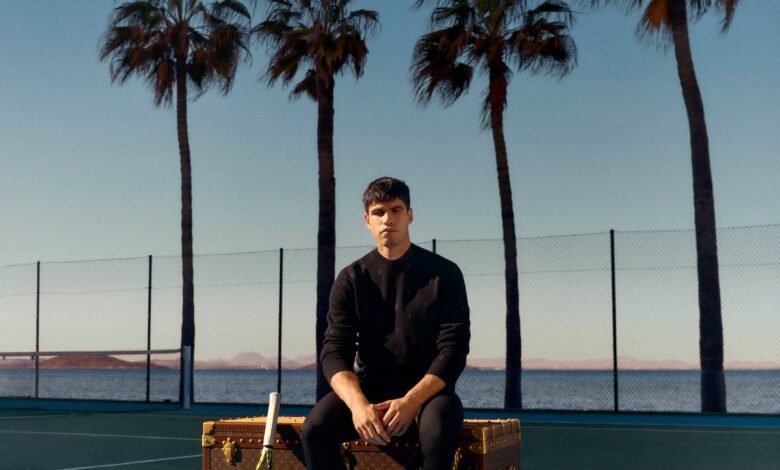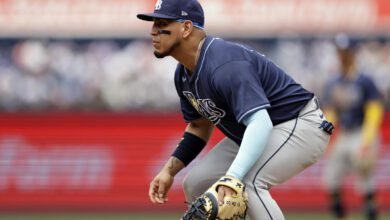Flexible Luxury Brands: How Athletes Became a Foolproof Fashion Statement | sports

Of the 15.2 billion euros ($16.5 billion) in net profits made last year, Louis Vuitton Moët Hennessy will allocate around 1% to glamorize the Paris 2024 Summer Olympic and Paralympic Games. The value of such a large contribution is not official, because the French luxury champion group has not announced it publicly, but sources close to the negotiations between the holding company and the organization estimate it at around 150 million euros (almost 163 million dollars ), according to France-Presse Reporting Agency. Not a bad amount for a budget of 4.4 billion. “France and Paris are such a powerful association for luxury brands that it is obvious for LVMH to want to be as involved as possible,” concluded The Business of Fashion upon learning of the premium sponsorship deal. [sic] achieved last July, after months of arduous back and forth over the use of the brands that make up the conglomerate in the Olympics. But this is not a story about money, but about values.
“LVMH, as a partner, will try to add a small touch of creativity, especially during moments of celebration…[We] I didn’t want to be just a financial partner. We wanted to have a role to play in holding these Olympic Games,” said Antoine Arnault, president and CEO of the French emporium and eldest son of its founder, businessman Bernard Arnault (the second or third richest man in the world). , depending on the ups and downs of the stock market). Arnault was speaking to journalists while attending the presentation of the first milestone of the agreement in February: the new medals that Olympic athletes will receive will be made by the brand’s jeweler, Chaumet. It is certain that the company’s champagne (Moët & Chandon) and cognac (Hennessy) will also be present at these moments of celebration. But this is a story with other protagonists, those who embody the values of the cause.
LVMH made its first Olympic success in September by signing new sports figures as brand ambassadors. Swimmer Léon Marchand, five-time world champion; fencer Enzo Lefort, gold medalist at Tokyo 2020; gymnast Mélanie de Jesus dos Santos, four-time European artistic gymnastics champion; tennis player Pauline Déroulède, French wheelchair tennis champion; and paracyclist Marie Patouillet, who won two bronze medals at the last Paralympic Games. All of these athletes will be candidates for medals for their countries and have stood on the podiums of Louis Vuitton (his) and Dior (hers) as representatives of those “craftsmen of all victories” with which the luxury group is associated. In fact, LMVH is a century-old supplier of custom-made trophies and trunks for high-level competition – from the World Cup to Roland Garros and the Copa América in sailing; is no stranger to this game. Neither do its two flagships, which have long used top athletes in their advertising campaigns. In addition to the usual football stars, Louis Vuitton’s men’s division hired Carlos Alcaraz as brand ambassador in August last year (the Spanish tennis player, ranked second in the world, will make his Olympic debut in Paris), while Dior Men has just added skateboarder Aurélien Giraud and surfer Kauli Vaast to his team.
“Especially in fashion, the relationship between athletes and big luxury brands has always been limited, if we don’t talk about football players. With the exception of Rolex, few [brands] I used them as an image or claim. But social networks have changed the rules: sport is a showcase for multimillion-dollar audiences and athletes are the best asset to give visibility to a brand, reach a greater number of potential consumers and gain or strengthen [customer] loyalty”, says Sean Burke, analyst at consultancy Clarkston. It’s true that the clothing industry has a long history on the Olympic field, with kits designed by some of its biggest names (Issey Miyake for Lithuania in Barcelona 1992, Ralph Lauren for the United States since Beijing 2008, Stella McCartney for the United Kingdom in London 2012, Telfar Clemens for Liberia in Tokyo 2020), but their fondness for athletes in advertising is a relatively new phenomenon (apart from their sport-specific labels). We’ve already seen them in campaigns for Nike, Adidas and Puma (Usain Bolt was one of the models in the autumn/winter 2022-2023 collection that was shown in New York a few years ago). They are common in brands with sporting roots, such as Lacoste (for Paris, German gymnast Marcel Nguyen was chosen as ambassador). And there’s even a legendary precedent: Jesse Owens used a new model of Dassler sneaker – the precursor to Adidas and Puma – to break records at the 1936 Berlin Games. However, it wasn’t until athletes proved themselves to be true content creators that conquered exclusive luxury brands.
Prada understood this perfectly, so much so that to recalibrate its foray into the Chinese market, it prioritized athletes above the usual showbiz celebrities. After making table tennis gold medalist Ma Long an athletic ambassador, it signed shot putter Gong Lijiao, marathon runner Li Zhixuan, water polo player Xion Dungan and basketball player Yang Shuyu for its spring/summer campaign 2022 on Douyin (the original Asian TikTok), in a demonstration of diversity that made non-normative bodies visible. That same year, Hugo Boss took a step forward by hiring Italian tennis player Matteo Berrettini not only as a model/image for its Boss line, but also as a guest designer. At the last Wimbledon tournament, his compatriot and courtmate Jannik Sinner caused a viral sensation when he walked onto the pitch with a Gucci monogrammed bag as the first non-football athlete to serve as an ambassador for the Italian brand. The problem is this: Not only do medal-winning athletes draw crowds on social media, beyond the field of play, as positive examples associated with the sweat of self-improvement, but they are also less likely to cause scandal than the usual suspects in movies, television and cinema. music. It is natural that luxury brands also want to be represented by them.
Sign up to our weekly newsletter for more English-language news coverage from EL PAÍS USA Edition



